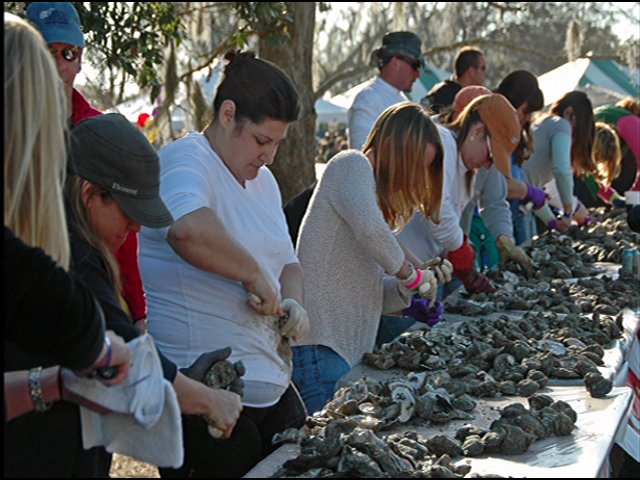Oyster Season in South Carolina
Oyster Season in South Carolina

The South Carolina oyster fishery is based entirely on the eastern oyster, Crassostrea virginica. Although other oysters are grown on the west coast, no other commercially important oyster species occurs on the east coast. The oyster is one of the most popular local seafoods. It is readily available and can be served in a variety of appetizing ways. Oysters are not only palatable, but also contain a number of vitamins, minerals, carbohydrates and proteins.
The oyster feeds by filtering food particles from the surrounding water. Opening and closing of the valves are controlled by an adductor muscle attached to each shell. Food and other particulate matter, suspended in the water, are drawn into the oyster by the motion of small, fringe-like whips called cilia located on the gills. The quantity of water pumped by a large, healthy oyster may approach four gallons per hour. Food particles retained by the gills are conducted by ciliary action to the mouth and then to the stomach of the oyster. Matter brought into the shell, but not passed through the mouth, is collected by mucus on the gills and then discharged. Large amounts of silt are rejected in this manner. This ability to separate food from silt apparently allows oysters to survive in waters of high turbidity which occurs in many estuaries. The filtering action of oysters can play an important role in removing not only suspended sediments from the water column, but can cleanse the water of various pollutants. Recreational harvesting of oysters and clams by individuals for personal consumption is a popular and traditional activity in South Carolina. Care must be taken to harvest only from authorized areas. In South Carolina, growing areas generally fall into several categories, including private grounds, known as Shellfish Culture Permits, State Shellfish Grounds and Public Oyster Grounds. The South Carolina Department of Natural Resources maintains the last two categories for public harvesting.
Public Oyster Grounds are areas where South Carolina residents can gather oysters and clams for their personal use. Commercial harvesting is not permitted. The boundaries of these areas currently are marked with metal signs which read: "Public Oyster Grounds, Commercial Harvesting Prohibited." State Shellfish Grounds are also open to recreational shellfishermen. These grounds may be marked with metal signs which read: "State Shellfish Grounds, Public Harvesting Permitted." In addition to harvesting only in an authorized area, there are several regulations with which the recreational harvester must comply. It is unlawful to harvest between May 15 and September 1 annually, although the Department of Natural Resources can vary the season if conditions warrant.
Search Properties



